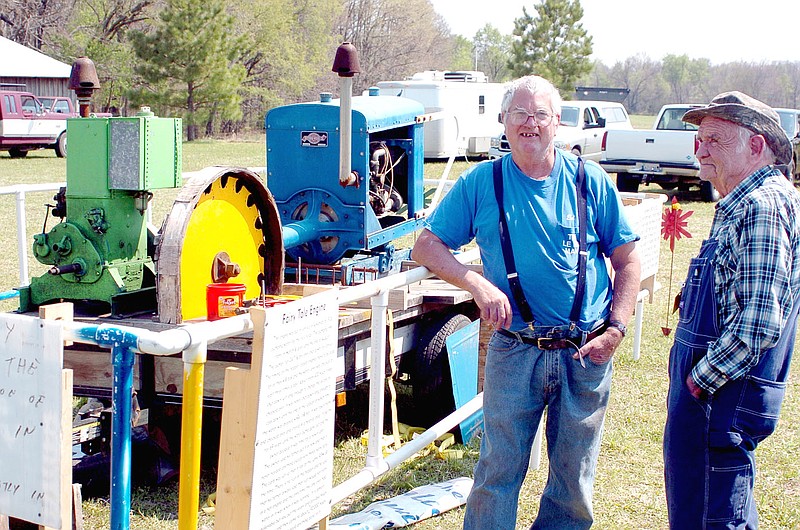GENTRY -- Once again, last weekend, members of the the Tired Iron of the Ozarks gathered at the club's showgrounds in Gentry and displayed and demonstrated antique tractors and engines, farm equipment, sawmills, blacksmithing, household machines and tools, and much, much more.
Why do they do it? To show off their collections and work and to show and teach visitors how work used to be done in local rural farming communities not that many years ago.
Austin Millsap of Gentry brought two restored tractors to the show -- one, a 1954 McCormick Farmall which belonged to his grandfather Bill Couch, and another, a 1968 International Farmall 856 which belonged to an uncle. Millsap, along with his father, Wally Millsap, and others put in countless hours to restore the rusty and worn out machines to pristine condition. And, by so doing, they keep alive a memory and preserve family and local history.
In the blacksmith shop, Blacksmith Organization of Arkansas member Bob Lock of Shell Knob, Mo., was teaching 17-year-old Regan Puryear of Gravette how to heat metal red hot and shape it into tools and decorative items with hammer and anvil.
Another member, Ed Malcom of Pineville, Mo., showed off his Le Roi engines and said he had the largest collection around -- 47 of the machines. And one of the machines, he said, had approximately 290 thousand hours of service pumping water in the rice fields over a period of 69 years. It still runs great and needs no work, he said.
According to Malcom, his engine collection is not worth much monetarily, but the old engines are worth everything to him and he enjoys showing them and talking about them to anyone who will listen.
Over at the sawmills, Jamie Smilie of Inola, Okla., along with Jack Daugherty and others, do what they have been doing at every show, spring and fall. They fire up the big engine which powers the large circular blade of the old sawmill and they turn logs into boards. Orville Bartley of Gentry, assisted by Carl Wood and Ray Dickinson, operated Bartley's Wood-Mizer bandsaw and explained how the saw was used, creating more boards and less sawdust than the traditional mill. When the saw was quiet, they exchanged stories about being each other's chaperones and alibis to keep them from trouble.
In the home antiques building, old sewing machines were at work, along with demonstrations and explanations of other items once found in homes throughout the area.
And visitors to the show were treated to sights and sounds no longer seen and heard. They could talk shop or simply listen and learn about the old engines and machines and how they were used in daily life.
A visit to the show was informational and educational but also could prove to be relaxing and a social pleasure. One could take a quick tour of the grounds or just leisurely spend a day, seeing the antique machines, talking to their owners and listening to their stories about days gone by and what life used to be like in the region.
Community on 04/23/2014
